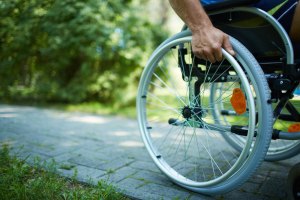Brain fog or fibro fog can be one of many frustrating aspects of living with severe pain and chronic illness, frequently an embarrassing symptom too. From fibromyalgia to CRPS to a whole catalogue of other pain conditions, when we are in pain, we just cannot think as well as we used to, which is of course entirely understandable though that doesn’t make it any easier to cope with.
Yet the cause of the fog isn’t fully understood and is not necessarily exclusively to do with living in high levels of pain. Many believe that it may have to do with pain patients’ inability to sleep well and because we are so chronically fatigued, pain itself can also obviously be entirely debilitating — it’s hard to concentrate when you’re in a lot of pain and experiencing sensory overload, which is why brain fog is not exclusive to fibromyalgia patients.
Symptoms of brain fog can range from mild to severe. They frequently vary from day to day, and not everyone has all of them. Confusion, forgetfulness, limited concentration, mixing up words, complete loss of speech, and severe short-term memory loss all fall under that irritating and frequently embarrassing umbrella of ‘brain fog’ or ‘fibro fog’.
Pain by its very nature, is designed to attract — and keep — your attention. Add to this the maladaptive neuroplasticity that occurs in chronic pain and complex conditions and it’s little wonder we are so clogged with the fog. Yet before resigning yourself to a life of “Um…” there are things that you can do to lessen this irritating — and often embarrassing — symptom. Here are 10 ways to manage and cope with brain fog. I’m sorry, what was I saying? Ahh yes. Tips.
Write it Down
Always make notes. Whether using apps on your mobile, Post-it notes, a notebook, or whatever works for you personally, all of these things help keep a record of what you need to remember. Using a notebook and carrying it everywhere, though perhaps a little old school, can often be a life-line.
Even if your home’s fine furnishings are hijacked by a hundred Post-it notes, if it helps you function, use them. Evernote is a personal favourite app and can be used on your mobile or computer. Other apps can help you remember things, such as Todoist, which — like Evernote — automatically syncs wherever you log in, which is useful for those moments of clarity when you need to write something down [and quickly, before that too slips into the ether].
Post-it notes, apps on your mobile phone and/or computer and notebooks can be sanity-savers.
Commune with Nature [Whenever Possible]
Our modern lives – with seemingly endless bleeps and gadgets, computers, TV, texting, social media, emails and phone calls all going at once – overstimulates the brain and increases our already high stress levels. Our brains can only hold one thought at a time and with severe pain, part of you is always already focused on the pain, making concentration more difficult. Constant interruptions disrupt our ability to focus, concentrate and retain information even further.
Nature has a calming effect. So sit outside if you are able to, enlist some help to take you to a park or natural place. If you are blessed with nature close to home, take advantage and stop to watch the sunset or just gaze at evening stars.
People who walked through a wooded park for 15 minutes significantly improved their performance on an attention test, according to a 2008 University of Michigan study. Those who walked on noisy city streets before testing stayed the same.
Although many princesses and princess in their respective towers may not have the luxury of being able to walk for 15 minutes, if you can, do and if it is beyond your limitations, still aim to be taken outside when it is warm enough (or you are wrapped up warm enough) and let its energies soothe you.
Increased exposure to sunlight, especially in patients with SAD (Seasonal Affective Disorder), may help you to think more clearly. “The beauty of nature will give your prefrontal cortex – the area of your brain that helps you focus – an opportunity to recharge,” says neurologist Marie Palinski, at Massachusetts General Hospital.
Organise Your Surroundings [as Much as Possible]
The more tasks that accumulate and the more chaos exists in your surroundings, the worse brain fog seems to be. If you’re surrounded by clutter and everything disorganised, it is hard enough for healthy people, let alone those of us who often find ourselves quite unable to even keep up with day-to-day activities, let alone organise our homes.
With high levels of pain and other debilitating symptoms, the idea of sorting through your possessions, organising your home and life is intimidating at best, impossible at worst. If you can enlist some help, do so. Say to your loved-ones how important it is, how it helps you both manage your symptoms and life, how — if they would help you with this — it would make a huge difference.
When crossing a room needs both rest and recovery, it makes a huge difference to be able to access what you need without flaring your pain, which of course lessens the associated brain fog; it’s impossible to think when flared-up. Anything that helps make your life less stressful will reduce the fog. Ensure things are within easy reach, as clear and organised as possible.
Even clearing and sorting a single draw or a donation box can make the start needed to instigate a new chapter. Of course, it’s hard to ask for help and many do not have the resources or people to dedicate time to helping. Another solution is to put a few strategies and routines in place. Routines and organisation strategies offer solutions because they become as automatic as habits themselves and reduce the distractions that clutter your thinking, try the following:
Tips to Reduce the Fog
- Use lists, reminders and calendars. Keep some of these tools, such as a calendar, in a prominent spot and develop a routine for using it.
- Use baskets to quickly get organised – They can be a swift and effective way to put related items, whether flare-up items, medications or simply your bathroom products, into one place. They look tidy and also are easy to keep tidy.
- Use medication boxes – these have the time and day printed on each compartment within the box so you know when to take your meds, as well as if you have already taken a dose. Vital for safety if your brain fog hampers with this.
- If you have a doctor’s or other kind of appointment, ensure everything is ready the night before. It can be useful to write out a check-list of what you need leave the house with. Medications, heat wraps, cushions and supports, any of the things that help you live and cope with pain.
- You can also place a check-list on the inside of your door so you do not forget anything when leaving your home.
- Put the items you need and use every day near to your bed, if mostly bedridden, or simply in the same place if housebound or with limited mobility.
- Always keep items you use regularly such as your keys in the same place.
- If your fog is thickest in the morning and you have plans, put out the clothes you want to wear the night before. If you also dress according to pain levels, especially when hypersensitivity makes wearing clothes so painful, ensure you have taken this into account in case it’s a particularly nasty pain day.
- Use your flare-up tool-kit (free when you sign-up to the newsletter) and put everything you need to help you make it through your flare in the same place/in a flare-up tool-kit box.
Change Routines
“When stuck in a rut, we’re constantly treading the same brain pathways. Engaging in a new activity literally wakes up our brains,” says neurologist Marie Palinski. When the same brain pathways are stimulated instead of creating new ones it can lead to a depletion in cognition. Without stimulus, areas of our brains work less efficiently yet each time we are immersed in a new experience or activity, it genuinely wakes up our brains. This is because the brain has to lay new neural pathways to process the new information.
Unlike the former view that our brains are fixed, our intelligence too, it’s now accepted that we have the power to instigate new pathways and consequently, light up our brains, helping to keep them vibrant and cognisant. If you find yourself stuck both physically and metaphorically, it can be difficult to help heal yourself or manage your pain.
Inspire a new positive chapter and also help reduce brain fog by changing your routine. It can be as simple as opting not to watch television and instead reading a book of poems or a novel you enjoy. If novels are tricky, try short stories or vignettes. They’re perfect little gems of distraction, even when your pain is high and thinking all the more compromised.
You will not only help your mood but also increase cognitive function. Numerous studies have found that excessive TV watching is associated with depression, lower cognitive function and a decline in overall physical health. In other life areas, the opposite can help.
Obviously, everything is so limited, particularly if stuck in bed or at home because of such severe symptoms but even baby steps and micro changes can offer a certain newness that is so frequently lost when life becomes a dull routine of simply trying to get through each day.
Bring new things into your life. Develop routines to become more efficient. Living with brain fog becomes easier on a schedule. Routines train the brain and allow for more mental energy to be directed elsewhere.
Pick Your Best Time of Day
Though our symptoms and pain levels are so impossible to predict, most of us have better and worse times of the day where our focus or pain is at its lowest. Do the tasks that require concentration and mental clarity during the hours you are at your sharpest.
Although this typically varies from person to person, and fluctuates too, find the time that’s best for you. You can help manage your brain fog by planning activity and cognitive tasks around that time.
Relax Away the Fog
If you can never relax, thinking will always be more difficult. Find something that you enjoy, whether it’s as simple [but powerful] as diaphragmatic breathing for a few minutes a day, practising restorative yoga or tai chi, or lying on your bed listening to the sea through your headphones (great when flared-up).
Relaxing activities such as yoga, tai chi and meditation can improve problems with sleep, fatigue, poor memory and anxiety – all of which are linked to brain fog, according to many studies. In one 2010 study conducted at Oregon Health and Science University , women with fibromyalgia on an eight-week program of meditation and gentle yoga poses had a 42% drop in depression and 30% decline in fatigue.
These posts offer natural ways, including meditation and other relaxing techniques to reduce your pain and in turn reduce your brain fog, offering both clarity and calm: 3 Natural Ways to Reduce and Manage Your Pain and Pain-Relief and Coping Techniques for Severe Pain
Postpone, Switch Tasks or Cancel Activities
When you’re too tired and full of fog to think, put things off until the next day and get extra rest instead. Listen to the needs and signals your body gives. Use the presence of brain fog as a signal to slow down. If you’re not thinking clearly, more so than usual, postpone anything that is too mentally challenging, switch to a simpler task or stop and take a break. If your brain fog is worse than usual, it is often a sign that you need to rest and allow your body to recover.
Avoid Over Stimulation
Many chronic pain patients are sensitive to noise, to light or to sensory input coming from more than one source at the same time (for example, trying to have a discussion with the TV on). CRPS in particular, with its severe allodynic pain actually translates stimuli that are entirely innocuous to healthy people into pain signals.
So noise, light, even the breeze from someone walking by will cause excruciating pain. Central sensitisation also creates pain from too much stimulus. Limit sensory input by moving to a quiet place and avoiding distractions.
Laugh, Sing, Clear Your Mind
Although physical activity can increase energy and clear your mind, it isn’t always possible when in crazy pain. However, something as simple as laughing, singing and deep breathing can help increase energy and offer a little more mental clarity too.
For some people, fog may be triggered or exacerbated by lack of nutrition, so for them, eating counteracts mental fogginess. Although I will cover this in more detail in a separate post, for now, take a peek at Supplements to Help Banish Brain Fog.
Brain Fog and Fibro Fog
- Other Health Issues — Be aware that other health issues, such as sinusitis and environmental allergies, may worsen symptoms of brain fog.
- Medications — Side effects from certain medications include confusion and can worsen the fog, some medications may even produce symptoms of brain fog. Discuss dosages and alternatives with your doctor.
- Energy Drinks and Foods — Avoid products that claim to ‘increase energy’ as many of these products contain caffeine and often too much sugar, which can be counter-productive and lead to an energy slump – and consequently a slump in cognition too.
- Avoid Overexertion — Being too active and living “outside your energy envelope” will always worsen brain fog.
- Fatigue — When feeling especially fatigued, be kind to yourself as it is hard to be alert when completely exhausted. Try not to become frustrated but self-compassionate. You are already dealing with enough.
- Over-stimulation — Sense information from multiple sources always makes brain fog worsen. Be aware of this and try to ensure your environement is as calm as possible.
- Multi-tasking — Doing more than one task at the same time is never a good idea for people with chronic pain conditions that include symptoms of the fog and can often lead to frustration. Ease your brain fog by only ever focusing on a single task at a time.
- Stress — Stress makes everything worse, regardless of health but for those with CRPS, fibromyalgia or chronic pain and other pain conditions, stress increases all symptoms, especially pain and brain fog.
- Poor Sleep — Not getting restorative sleep can make it feel as if your brain has been replaced by clouds. Allow yourself the grace to accept that you are feeling even more tired than usual and opt for easier tasks whenever possible.
- Medications — Side effects from certain medications include confusion and can worsen the fog.
- If you experience any abrupt changes to your thinking or a steady decline in mental functioning, visit your doctor.
Sign-up and receive a free flare-up toolkit and regular posts and tips on living – and coping – with severe pain and chronic illness ♥
[avatar user=”jomalby” size=”thumbnail” link=”www.princessinthetower.org” target=”_blank”] Gentle hugs x[/avatar]








thank you any info helps
You’re welcome Bernadette, thank you for your comment. I hope today is a whole lot kinder to you. ❤ x
Have tried several times to leave a comment. I have sever tech issues, seemingly always. I cannot keep typing and typing just to try to express how I feel. It is physically and utterly emotionally EXHAUSTING!!! .I do thank you for the helpful tips.
Thank you for your comment Lisa, and know exactly, tech troubles can be the most painful thing. Really hope both they, and your pain too, lessens. Gentle hugs ♥ x
A newly diagnosed CRPS patient. . 30 Drs later and systemic . . This is so very helpful.
Thank you
Lucy
I’ve read I think 3 of your posts today & have cried many times while reading each one. I can’t even begin to tell you how much the validation & ACTUALLY reading someone else’s thoughts on EXACTLY how I’m feeling & what I’m going through has done for my heart. I’ve been in a REALLY bad place lately & you’ve written validation of everything I’ve been questioning of myself. Thank you for being here.
CRPS WARRIOR in Michigan(coming up on 3 yr anniversary of day the monster hit me & hasn’t left).
It’s my pleasure and privilege too Sammy, so pleased they resonated and touched by your lovely comment. ♥ x
I suufer from chronic neuro lyme disease and insurance has denied my antibiotic treatment. Your information has helped me in confirming to listen to my body on what is needed to survive until tx is approved. I have been using many of the techniques listed and your article has given me more ideas that I will use. Thank you.
You are so welcome Linda. So pleased to hear that, and I hope you continue to find support and techniques that help you cope and manage the symptoms too. ♥ x
This article on fibro fog was most enlightening! Just today I had a horrible bout with it while trying to have a sweet conversation with my Grandson who is going off to college. Its so terribly embarrassing! I am behind on my drs appointments. So i need back on track. I just can’t seem to verbalize that i have some problems!! I usually just say i have some health issues. All thats is going on with me because of fibro SuCkS!
So pleased you enjoyed it Carol. It’s such a tricky symptom, especially as when stress rises in our frustration it then exacerbates the pain and fog, worsening both. I hope the suggestions help you. It’s so easy to feel overwhelmed when dealing with so much but if slipping behind on things, one practice that helps me personally, is to break everything into mini tasks, and focus exclusively on one at a time. It’s better for your brain and our coping/sanity too. 🙂 Gentle hugs x
Thank you so much of this site and all of the incredibly useful tips, articles that describe symptoms and struggles and tools for coping. This site is such a good reminder that we are dealing with some serious health problems but we need to be kind and gentle to ourselves (something I struggle with) and to ride the waves. Flare-ups and set backs (a term I learned on your site today) do happen but panic and despair don’t help. I plan to share these amazing resources with groups, doctors, individuals and random people on the street. A thousand times thank you.
New daily persistent headache, seronegative rheumatoid arthritis, joint hyper mobility syndrome, osteoarthritis, depression and anxiety.
Sending love,
Tonya
Thank you so much for your kind comments Tonya. It truly means so much that you enjoy the site, and find it useful too. I completely agree, and think that though it’s a human tendency to focus on our failings, or what we perceive to be as such, illness and pain included for we can blame ourselves instead of treating ourselves as we would a dear friend in these struggles. Self-compassion is so important, compassion in general too 😉 Thank you also for sharing the love for anything that helps others in pain even humbly makes it worth every spoon. Gentlest hugs and love x
There aren’t enough adjectives to thank you or convey my thankfulness for your help! I read your & shared your info w/my husband & family 3x! Some even took notes! Lol! It opened up a great chat session & helped them understand so much better the challenges & frustration I go through every day, all day! Thank you! Thank you!
You’re such an amazing & wonderful blessing! I pray abundant blessings & favor for you, the incredible work you’re doing! That all the encouragement, compassion & inspiration you give to others come back to you a hundred fold!!
Aww thanks, Misha! So happy you enjoyed/it’s useful, esp. for your loved-ones to understand. That’s wonderful! And thank you, a thousand blessings for you too ♥ Princess Misha ♥ x
I absolutely loved the Post about Brain-Fog/Fibro-fog. I previously worked in the Med’cl field, as a Counselor and Advocate 4 the Severely Mentally Ill…so I am used to explaining Symptoms, Diagnoses, etc., to Drs, Nurses & Spec’lists. But RARELY do I find any type of Dr that really understands the Symptoms of Fibro-Fog, and /or any possible ways to make the situation any better. Esp b/c most Drs don’t have a clue as to what it is to begin with, nor are they therefore aware of any of the Correlating Symptoms that are so common with those with Fibro-Fog. So an article like this is a perfect example of info that can be directly given to any/all of my Specialists 2 ensure that all of their Notes/Assessments are correct, in regards to Fibro-Fog Info/Symptoms & therefore I can verify all of the Fibro-Fog info I give to Ea Dr is correct and complete!
So happy you did, Jenn, and thank you for your lovely comment. Delighted it’s useful. The dreaded fog is such a difficult symptom—especially when it so frequently prevents us explaining ourselves for e.g. when the pain shoots up but we cannot articulate but it’s so much more than that as you know. Gentlest hug ♥ x
Many thanks for the tips, but also for taking the time to listen and respond with GENUINE ideas. Sometimes the idea of something different helping deal with my polyneuropathy at 40 yrs. old, is helpful. Prayers all around.
You’re most welcome, Michelle. Your comment made me smile — genuine is always far finer… 😉 Only hope they help you. One thing I discovered since writing the post, though I did mention it briefly in the post on supplements for brain fog is PS—100, or Phosphatidylserine, which lowers cortisol, always welcome with the stress of chronic pain and illness, and also can help reduce brain fog. Keep me posted! ♥ x
I’m so happy I found this website, I just wanted to thank you. I might print out one of these articles and bring get it to my next dr. Appt. Because it all describes my life to a tee and I never know how to let my PRIM. CARE Dr. Know what I deal with, I’m sure he will be happy I found you as well. Thank you so much.
Thank you, Mary, so glad you found it too! Also that you enjoyed this post and delighted it’s useful for you and I hope, helping your doctor understand. Apologies for the delay on my reply to your lovely comment, I’ve been without the use of my hands these last 6 months & in quite the longest CRPS flare but on far happier notes, truly hope you find comfort, support from your doctor and continue to enjoy the offerings on here. ♥ x
I would like to sign up and receive a toolkit. I have CRPS. thank you
Just added you, Mary Ann. You should receive it very soon. ?
OMG…Thus article was amazing! I have chronic pain, however, my sister and husband have Severe, chronic nerve pain…unless you do, people cannot really understand all the other things that become challenging…..this is a great site for ideas, information and encouragement. Depression becomes a big part of this tool. Thank you. I am going to make sure my sister ha this too.
Thank you Maureen, so happy you enjoyed and thank you for your kind words and sharing the love too. Gentle hug x
Just “discover” this site and I find it very much full of resources! I have CRPS and couldn’t find some good content about chronic pain! You got some here from what I read so far!
Keep up the good work! We’re all alone out there, except for those who like you write something for us!
Thank you, Anne-Marie, so touched by your words and elated you like the site. As you share CRPS, know you’ll understand the unquenchable longing to do infinitely more, but moving forward is better than not moving at all, even if it’s metaphorically for now 😉 Thank you <3 gentle hug x
Great article with good insight
I am 88 years old and have had several sad events happening in my life lately like our only daughter who passed away 6 months ago with pancreatic cancer, We have had several related visitors from family who I truly love come to visit from out of town, and I get very nervous when I know that they are coming for a visit, Also I am feeling overwhelemed with health problems of my own.
I do not want to take medication that is addictive.,
Prayer seems to help.
Blackie
I would advise you to practice meditation, for example, since meditation cultivates a state of focused attention and heightened awareness. Through various techniques, such as mindfulness meditation, we can learn to observe their thoughts without judgment and bring attention back to the present moment.